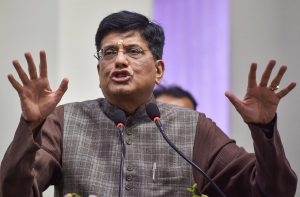Govt should shed its piecemeal approach and address the long-term problems of farmers

Tackling the rising cost of cultivation will become one of the key focal points of the Union budget if the government is keen on addressing the twin concerns of stagflation and a dip in rural consumption. Curtailing increasing input costs of agriculture, access to an efficient and well-defined single window facility, and bridging the disparities in farmer incomes are the key areas the government must focus on to provide some relief to the farming community in the country.
“The foremost thing the budget should focus on is to somehow curtail and reduce the prices of agri inputs,” says Sushil Kumar, Professor of Food and Agribusiness, Business Sustainability and Human Resource Management, Indian Institute of Management (IIM), Lucknow. “Additionally, there should be enough emphasis on protecting farmers’ income from the uncertainties of weather through agri-insurance. The budget should make sufficient provisions for the development of income-generating activities in the non-farm sector in villages through micro-financing, self-help groups, etc,” he adds. He expects the upcoming budget to have sufficient support measures to protect farmers from spiraling inflation, especially as a result of various climate change-related adversaries that have become too frequent and intense in the past decade.
That said, Arun Nagpal, co-founder and managing director of Mrida Group which specialises in holistic rural development, points out that while doubling farmer incomes is undoubtedly a commendable goal, first and foremost, there is a need for a robust mechanism that fairly and at least, reasonably measures the actual increase in farmer incomes accurately and reports it transparently. “In essence, there needs to be a sense of accountability towards this objective, across the board,” Nagpal notes.
Another core issue that needs to be addressed, according to Nagpal, is the disparity in farmer incomes. “There needs to be a visible, concerted effort in bridging the gap between the haves and the have-nots, and ensuring that issues of small and marginal farmers, who make up by far the bulk of India’s farmer base, are specifically addressed. At the same time, at the operational level, Krishi Vigyan Kendras can be effectively used as a tool to reach out to farmers to facilitate knowledge dissemination and practical inputs on the ground and convergence of various central and state schemes in the last mile and at farmer’s doorstep,” he adds.
Leveraging technology in the agriculture sector is another measure that can help the government fulfill its promise of doubling farmer incomes by 2022. There should be a specific outlay that marries technology with the available knowledge base to address issues such as the vagaries of weather, irrigation facilities, crop inputs, and so on. “The objective would be to develop an integrated system that not only makes critical information available on a real-time basis to the farmer, but also facilitates efficient utilization of scarce resources—drip irrigation, seed treatment, threshers, and so on. There is also an urgent need to facilitate investment in a more holistic approach to the agriculture value chain—from weather forecasting to agri inputs through the sowing-cultivation-harvesting cycle, to agri processing and value addition, and finally the supply chain, including storage, cold chains, and market linkages. In fact, if we can have technology parks, IT Parks, industrial hubs, and the like, why not have a specific outlay to set up large, integrated agri hubs that can span the entire value chain from farm to farm? Combined with the policy level initiatives as proposed, and the on-ground operational inputs as outlined, these agri hubs could well be a harbinger of real change,” Nagpal explains.
There is an urgent need to encourage and incentivize private companies to do farm extension and work towards farm productivity to double the incomes. “There should be steps to encourage availability of farm credit to farmers based on the cash flow generated in the farm,” says Shashi Kumar, cofounder and CEO, of Akshayakalpa.
He adds that subsidy-based support measures are not currently working in India. Schemes such as PM Kisan do not go a long way in addressing the long-term problems of India’s farmers. “I don’t see what the budget can do other than continue the subsidy schemes. No one knows that giving Rs 6000 support will serve any purpose for the farmers. For instance, during the onion crisis, PM Kisan’s scheme in no way shored up what farmers lost during the steep fall of onion prices. The piecemeal approach like the PM Kisan scheme will not help in addressing the long-term problems of farmers,” says Shashi Kumar.
Besides, improving soil fertility should be another focal point. Soil fertility, which has been consistently decreasing or stagnant, is leading to stagnating yields of various crops in most parts of India. “Budget should make provision for appropriate measures to revive soil fertility. The majority of farmers also lack access to market information and have not benefited from market linkages. The budget should focus on reducing this information asymmetry and link farmers with the markets so that farmers can realize better prices for their produce,” Sushil Kumar notes.
Source: The Week
Link:https://www.theweek.in/news/biz-tech/2020/01/27/budget-2020-improving-farmers-income-arresting-input-costs-to-be-key-challenges.html


